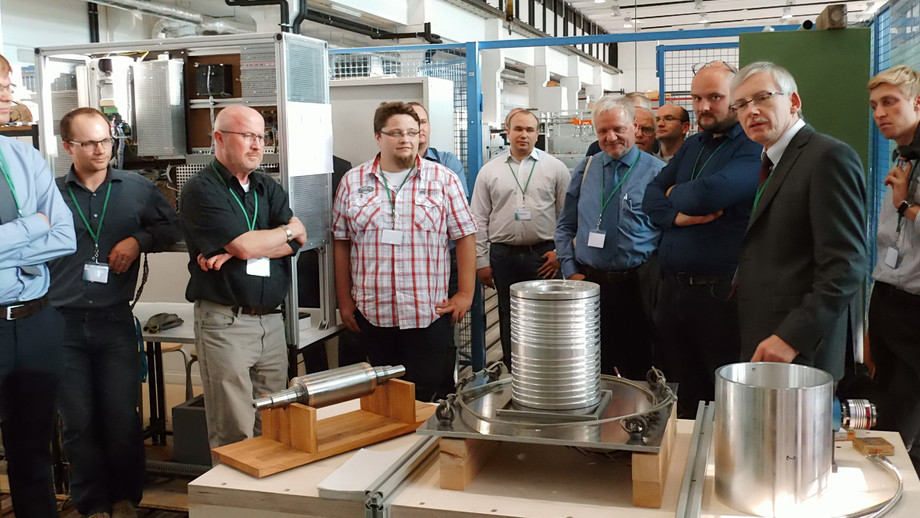The focus: applications in the high-temperature range and solutions for increasing the efficiency of magnetic bearings.

The "Magnetic Bearing Technology" workshop took place for the eleventh time this year. At the beginning of September, experts from Chemnitz and Dresden Universities of Technology, Zittau/Görlitz University of Applied Sciences and various companies met at Chemnitz University of Technology to present the latest results of their work in this field, exchange experiences and discuss new projects. The focus was on applications in the high-temperature range as well as solutions for increasing the efficiency of magnetic bearings.
Materials and new production technologies are playing an increasingly important role in this. The first magnetic bearing coil produced using a 3D printer attracted a great deal of attention. The copper winding and ceramic insulation are produced by a 3D printer in a single operation.
The workshop takes place every two years, alternating between the HSZG and Chemnitz University of Technology. At the end of this year's workshop, Prof. Frank Worlitz has invited participants to Zittau in 2019.
The 23rd workshop on magnetic bearing technology has a 23-year tradition. In 1994, the event was launched at the Zittau/Görlitz University of Applied Sciences by the then young Institute of Process Engineering, Process Automation and Metrology (IPM). In the 2000s, it was held alternately with the University of Kassel and then with Chemnitz University of Technology.
Prof. Worlitz's research group at the IPM has been working on magnetic bearings for over 20 years, primarily for applications in the field of energy technology. With up to fourteen research employees, countless projects from industry, as well as EU and publicly funded projects, have been worked on during this time. With three large-scale test facilities, the university's institute has an experimental base that is unique in the world.
The results of this work include the first magnetically levitated coolant pump at the Boxberg power plant (in cooperation with Vattenfall) and the oil-free industrial steam turbine (in cooperation with SIEMENS), which has been in operation at the Jänschwalde power plant since April 2015.